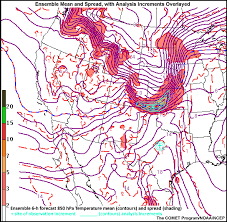Prediction or extrapolation offers the ultimate test of the information-content one possesses.
This process is most evident in toddlers, trying to explore the world around learning to walk n talk.
The ability that the Creator; Allah, has bestowed upon them is to be curious enough to learn_by_making_mistakes.
In other words, this ability allows one to compare an expected_out_come against actual _out_come.
Herez a make up example to explain: a child has some cool toy with black n white colors on it which he likes. Now he looks at the black n white colored stove & ponders, "hmmm... this (stove) looks cool, must be playable." Poor child burns his hand but learns a great deal - albeit the hard way - that all black n white stuff ain't so cool.
There was an error in the prediction - a great deal in this case - but lesson learnt was lasting nonetheless.
A less forgiving case is that of exercise questions at the end of chapters, written by seasoned authors.
A student uses the information given in the chapter to solve the exercise questions (which are not plug_this_formula_n_get_answer sort), only to find out that he couldn't quite get hold of it.
He goes back, reads up the same info over again from the perspective of the question, & try giving it another shot based on that info.
He, actually, is predicting & then improving on his grip about the subject from his initial error.
Same is the concept of Kalman filtering, i'm into these days.
Its a probability-based digital filter capable of filtering 'white noise', using its own error-information.
Here, the difference between a prediction and reality is called "innovation", & learning is all about exploiting that "innovation".
more on it laterz sometime.. inshAllah
~*~*~*~*~~*~*~*~*~








